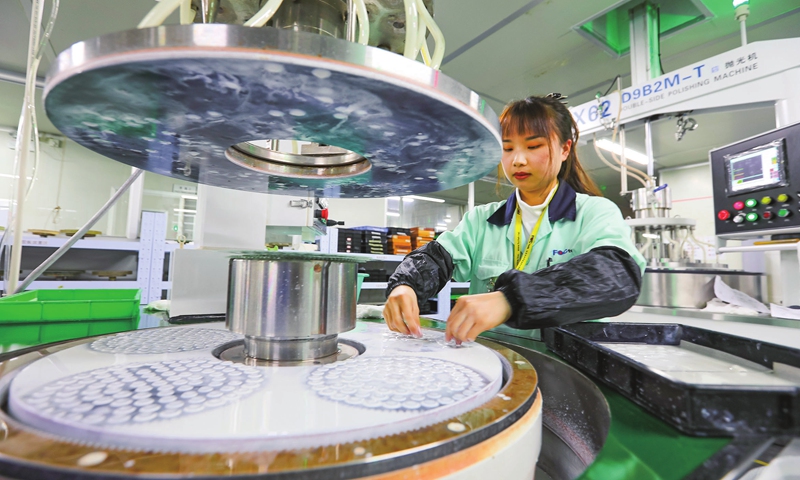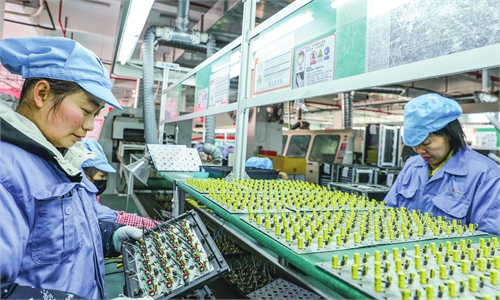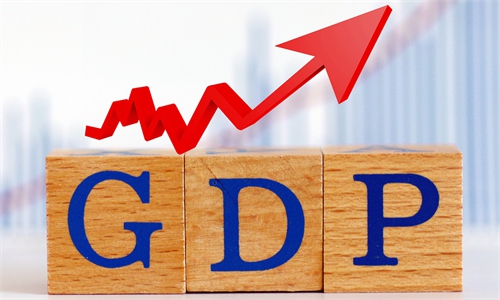China makes progress in accelerating high-quality development in 2022: chief statistician

A worker processes precision optical components in Minhou county, Fuzhou, East China's Fujian Province on February 17, 2022. An array of high-tech firms in the county have ramped up sci-tech R&D commitments to boost the appeal of their products, on the premise of effective COVID-19 containment, as they strive for a stellar start to the year. Photo: cnsphoto
China made more progress in promoting high-quality economic development despite complex global environment in 2022 and achieved fruitful results, said Kang YI, head of the National Bureau of Statistics (NBS), adding he has confidence in the nation's economic growth in 2023 on Sunday.
Kang said that the NBS is confident that China will perform well and achieve the set 5-percent growth target, based on the judgment on the nation's fundamentals of economic development.
In 2022, China attained major economic targets in five aspects in terms of high-quality development, covering research & development (R&D) investment, green energy consumption to high-quality opening-up and maintaining labor market stability.
The nation's R&D expenditure in 2022 exceeded 3 trillion yuan ($434.5 billion), accounting 2.55 percent of the GDP which is close to the average level of OECD economies, Kang said. OECD countries currently have 38 members and a range of partners that collaborate on key global issues at national regional and local levels, per its official website.
Kang added that China has entered the global ranks of innovative countries and is listed at the 11th slot among a total of 132 economies featured on the Global Innovation Index.
Kang said that China gave full play to the role of coal as the country's main energy source in 2022 amid a global surge in energy prices, and the energy consumption per unit of GDP fell by 0.1 percent though coal consumption increased by 4.3 percent last year.
Kang said that the nation's trade with members of China-proposed Belt and Road Initiative economies increased 19.4 percent year-on-year in 2022, and China remains the world's largest trading country, emphasizing that the newly published trade data for the first two months of 2023 beat market expectations.
Kang noted that the share of manufacturing sector in GDP reached 27.7 percent in 2022, up 0.2 percentage points from 2021. The contribution of domestic demand to economic growth was 82.9 percent in 2022 including infrastructure investment, which was 4.8 percentage points higher than 2021 and has become the main driver of economic growth.
In terms of stabilizing the labor market and protecting people's livelihood, Kang stressed that more than 12.06 million new urban jobs were created while the urban surveyed unemployment rate dropped to 5.5 percent at the end of 2022. The country recorded no instances of large-scale unemployment, while residents' income and economic growth were largely synchronized.
Meanwhile, Kang said that statistical fraud and data falsification still exists in some localities, even though the overall quality of statistical data has significantly improved.
The NBS has zero tolerance for statistical fraud and will take action and ramp up law enforcement efforts to ensure data integrity, Kang said.
Global Times



